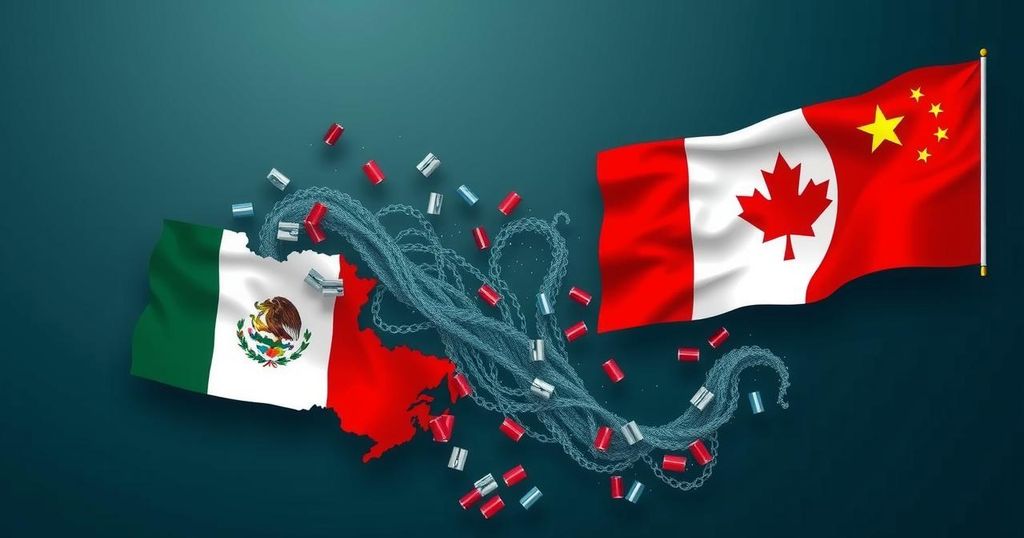President-elect Donald Trump has pledged to impose substantial tariffs of 25% on imports from Mexico and Canada, along with a 10% increase on Chinese goods, effective immediately upon taking office. This initiative aims to address illegal immigration and drug trafficking. Economists warn that these tariffs could impose financial burdens on American consumers and provoke retaliation from foreign nations, potentially sparking trade conflicts.
In a bold announcement, President-elect Donald Trump has vowed to implement significant tariff increases on imports from Mexico, Canada, and China beginning on the first day of his administration. This move aims to address illegal immigration, as well as the flow of drugs such as Fentanyl into the United States. Specifically, Trump announced a 25% tariff on all products imported from Mexico and Canada, which will remain until the issues he identified are resolved. Meanwhile, he plans to levy an additional 10% tariff on Chinese goods in response to the ongoing drug crisis.
Trump asserted his belief that America’s neighboring countries can resolve these longstanding problems easily. He criticized previous discussions with Chinese officials regarding drug trafficking, claiming they had not fulfilled promises to confront this issue seriously. Despite the implications of these tariffs on inflation and the potential for retaliatory actions from affected countries, Trump’s administration appears committed to using tariffs as a tool for economic strategy and as leverage in international relations.
Historically, tariffs have acted as taxes imposed on imported goods, leading to increased costs for American consumers. Economists generally warn that such tariffs can contribute to inflation, with the Peterson Institute for International Economics estimating that Trump’s proposed tariffs could burden typical U.S. households with costs exceeding $2,600 per year. However, Trump’s Treasury secretary pick, Scott Bessent, has argued that tariffs can be rolled out without exacerbating inflation.
The trading landscape is complex and fraught with potential for retaliatory measures by countries affected by U.S. tariffs, a dynamic seen during Trump’s previous term when a trade war emerged, ultimately affecting domestic manufacturers’ competitiveness abroad. Trump’s current tariff proposals are notably significant, suggesting upwards of 60% on Chinese imports and broad-based tariffs of 10% or 20% on all imports. As this continues to evolve, further developments will be forthcoming.
The intention behind tariffs often centers around protecting domestic manufacturing and addressing trade imbalances with foreign nations. Tariffs, which are tax-like levies imposed on imported goods, can lead to increased prices for consumers as businesses typically transfer these costs onto their customers. Economists extensively debate the impact of tariffs, particularly regarding their inflationary effects and their implications for international trade relations. Concerns also arise about retaliatory tariffs, which can ignite trade wars, damaging economic growth and competitiveness.
In summary, President-elect Trump’s commitment to implementing significant tariff increases reflects a continuation of his administration’s previous trade policies. These tariffs are intended to respond to illegal immigration and drug trafficking issues while also attempting to foster domestic manufacturing. However, significant economic consequences are anticipated, including inflationary pressures and potential trade conflicts with Mexico, Canada, and China, all requiring careful consideration in their implementation.
Original Source: www.cnn.com







